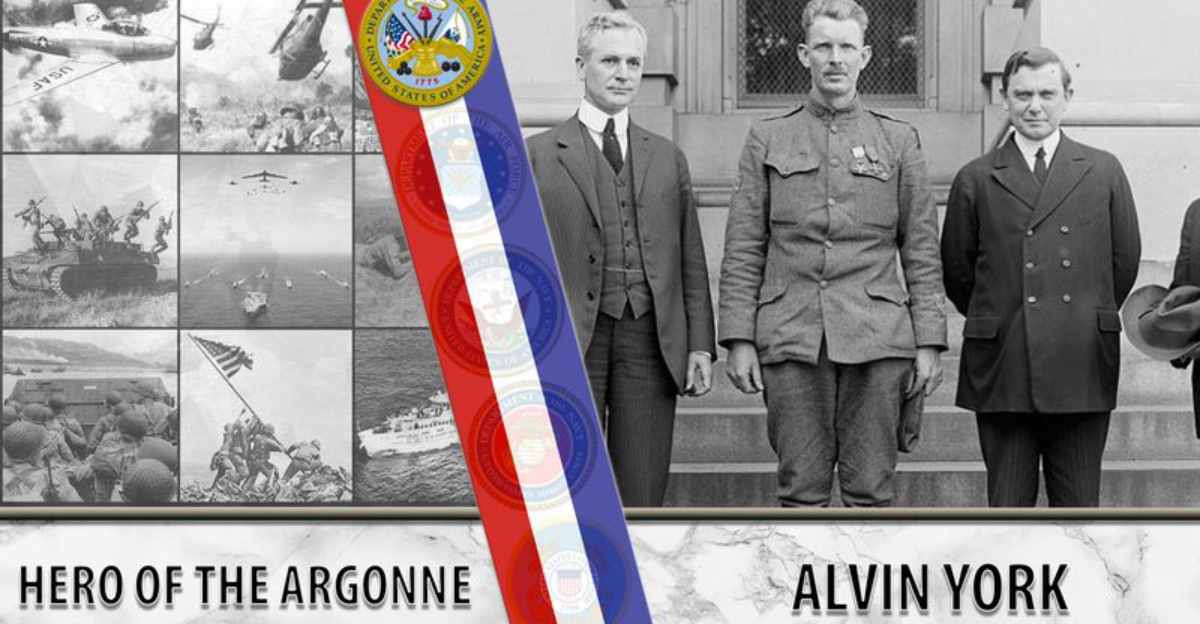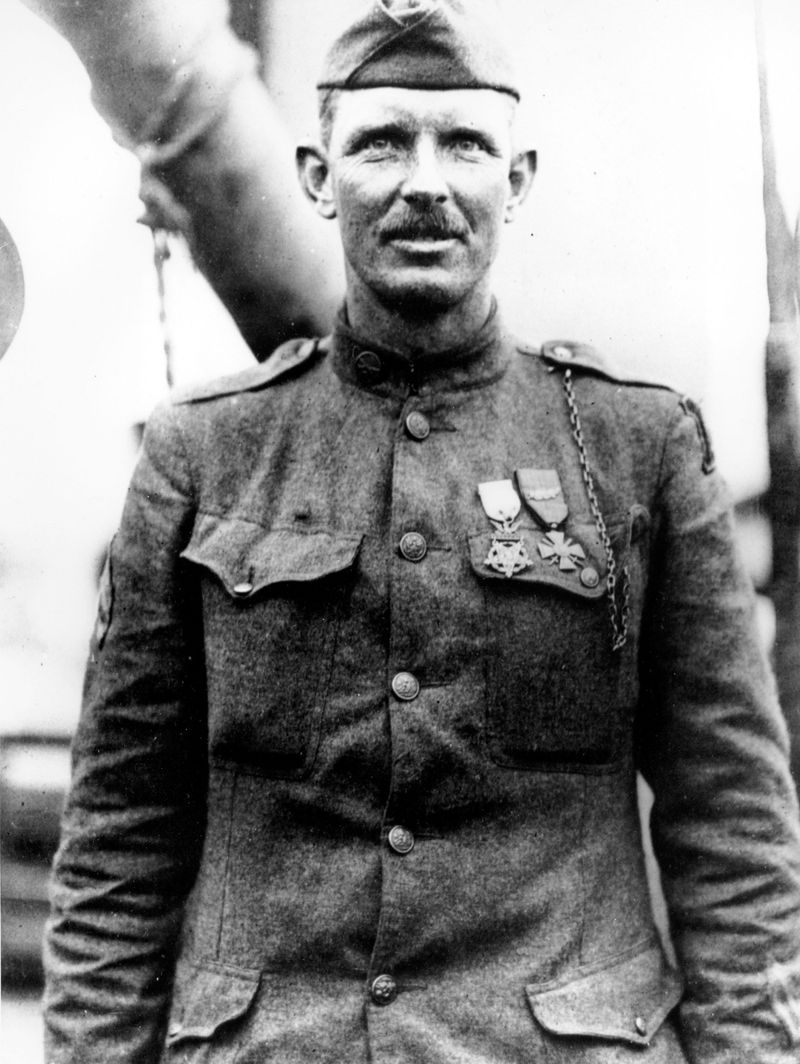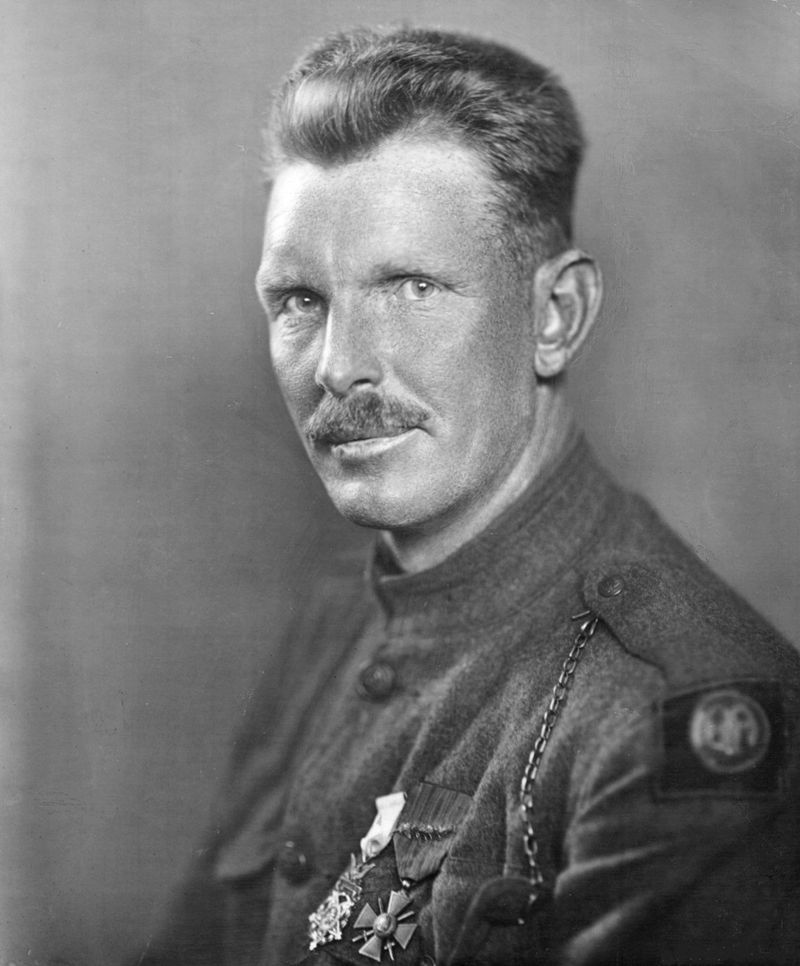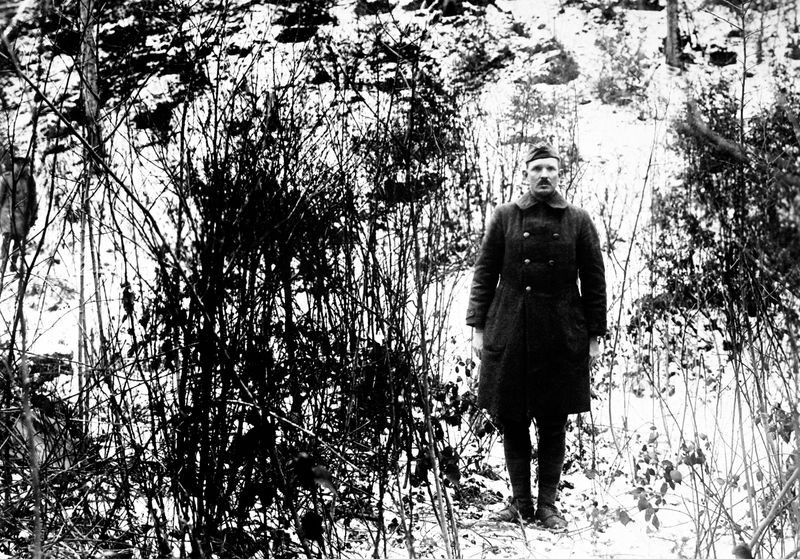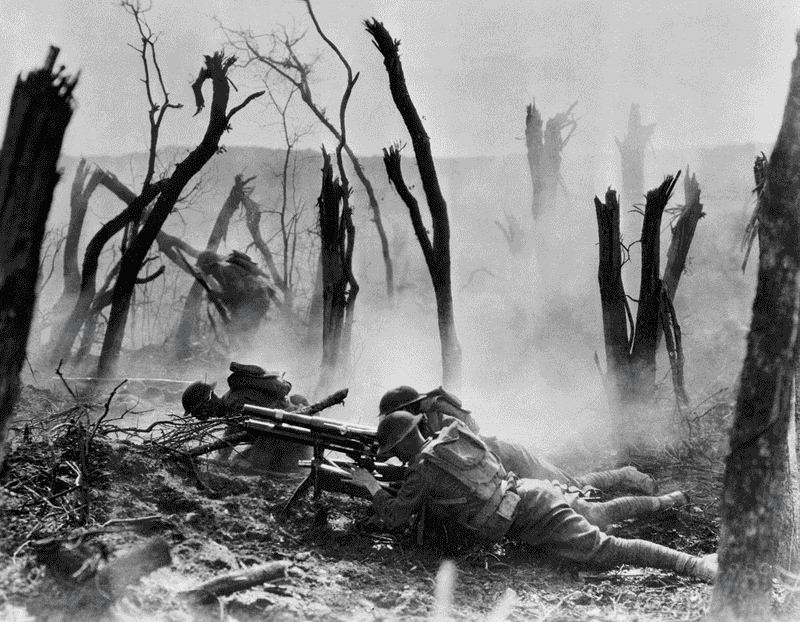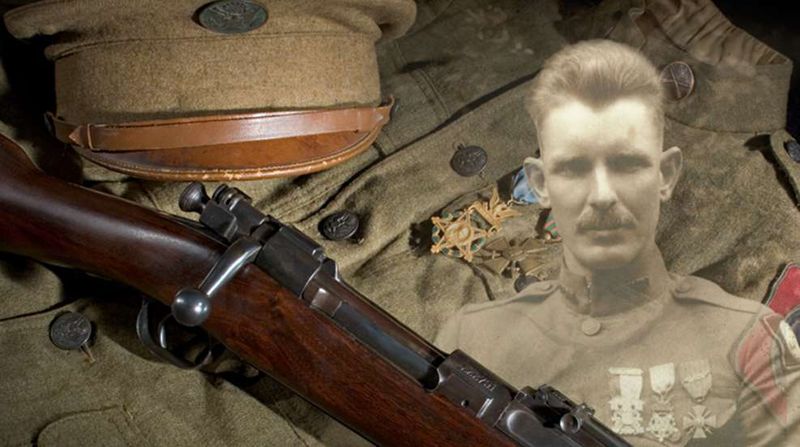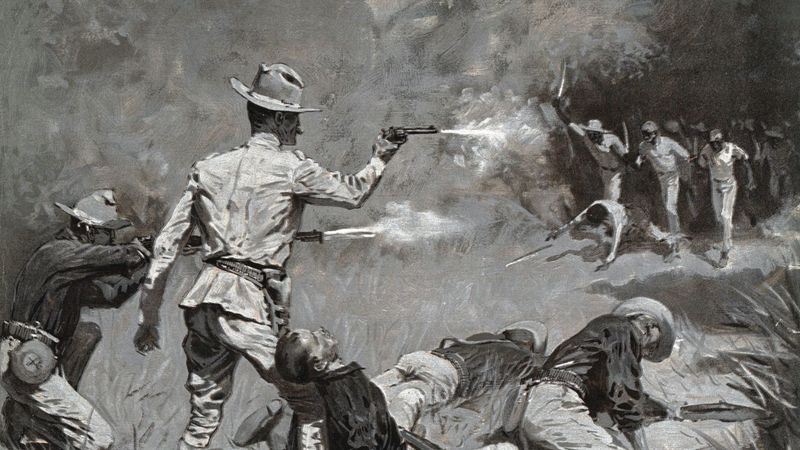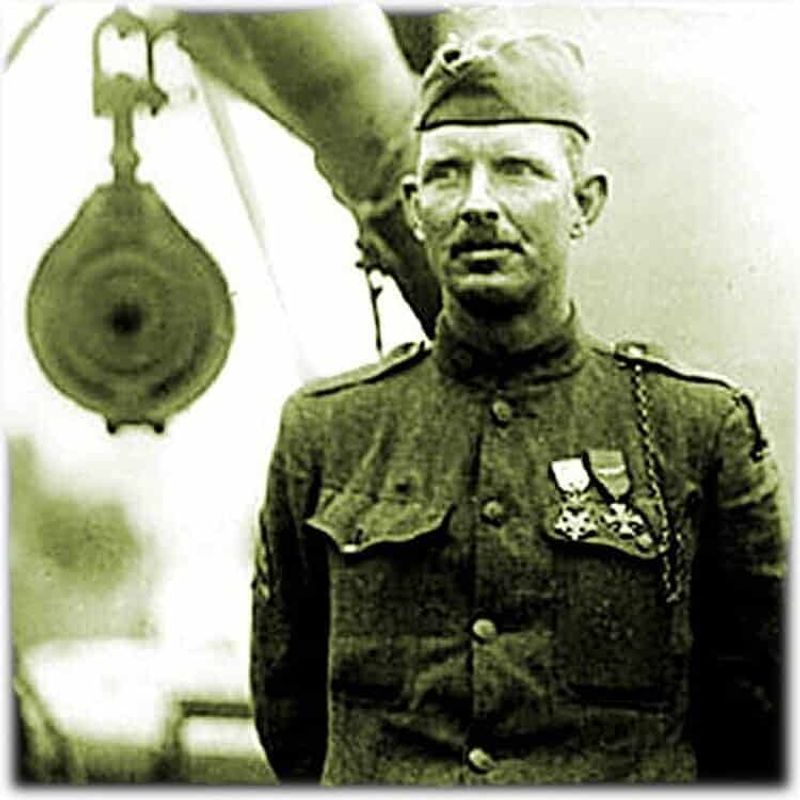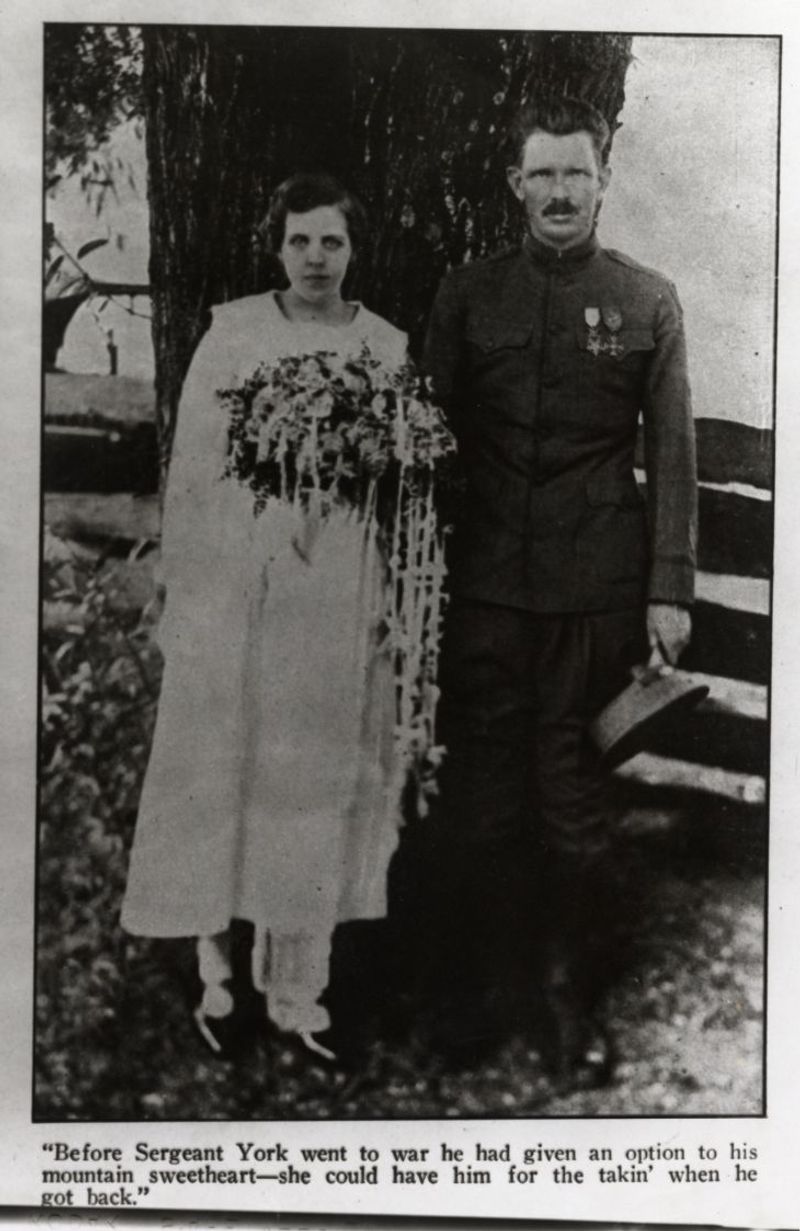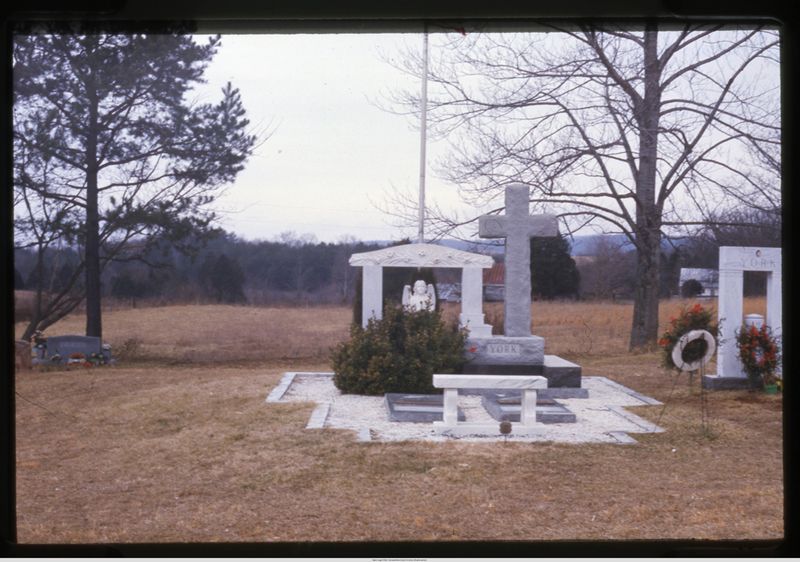Alvin York’s extraordinary bravery during World War I transformed a humble Tennessee farmboy into an American legend. On October 8, 1918, this reluctant soldier single-handedly neutralized 35 German machine guns and captured 132 enemy soldiers in France’s Argonne Forest. His remarkable feat of courage not only earned him the Medal of Honor but also cemented his place in military history as one of America’s greatest heroes.
1. A Devout Pacifist Turned Warrior
Before becoming America’s most celebrated WWI hero, Alvin York was a deeply religious man who opposed violence. His Church of Christ in Christian Union strictly forbade fighting and killing. When drafted in 1917, he initially registered as a conscientious objector.
York’s commanding officers, recognizing his potential, spent hours discussing Bible passages about justified warfare with him. During leave, York spent a night praying on a mountainside, eventually concluding that God would protect him in battle.
This spiritual transformation allowed him to reconcile his faith with military service—a decision that would alter the course of his life and American military history.
2. Extraordinary Marksmanship from Hunting Skills
Growing up in the rugged Tennessee mountains shaped York into an exceptional marksman long before he donned a military uniform. As his family’s primary provider after his father’s death, York developed uncanny shooting precision while hunting wild turkeys—notoriously difficult targets requiring head shots.
Local shooting competitions further honed his skills. York could consistently hit small targets at remarkable distances, a talent that would prove devastating on the battlefield.
His commanding officers were astounded when he outshot military instructors during training. This backwoods accuracy would become his signature advantage against German machine gunners in the Argonne.
3. Limited Education but Natural Intelligence
York’s formal education ended after the third grade, a common reality for rural children whose families needed them working rather than studying. His academic experience totaled just nine months spread across three years in a one-room schoolhouse.
Despite minimal schooling, York displayed remarkable analytical thinking and tactical intelligence. He taught himself to read proficiently through the Bible and developed practical problem-solving skills through his outdoor life.
This natural intelligence allowed him to quickly grasp military tactics and make split-second decisions under fire. York’s battlefield brilliance proved that wisdom isn’t always found in textbooks—sometimes it’s forged through life experience.
4. The Fateful Day in Argonne Forest
The morning of October 8, 1918, began as a routine mission for York’s battalion—capture German positions disrupting the American advance. Heavy fog shrouded the Argonne Forest as they moved forward, briefly providing cover before disaster struck.
German machine guns positioned on the hills opened fire from three sides, creating a deadly crossfire. Within minutes, York’s unit lost nine men, including his commanding officer. The remaining soldiers were pinned down with little hope of escape.
What happened next seemed impossible—York, then a corporal, took charge and began moving uphill toward the German positions rather than retreating. The stage was set for one of history’s most remarkable individual combat actions.
5. Incredible Shooting Under Pressure
When German gunners spotted York advancing alone, they trained their weapons on him. What followed demonstrated shooting skills that seemed almost supernatural under combat conditions.
York fired with methodical precision, always aiming for the last exposed gunner first, then working forward—a turkey hunting technique that prevented remaining gunners from ducking after seeing others fall. Witnesses reported he never wasted a shot, each bullet finding its mark despite being under intense fire.
German officer Lieutenant Paul Vollmer, who later surrendered to York, described watching in disbelief as York picked off his men one by one with impossible accuracy while bullets tore through the air around him.
6. The Pistol Showdown That Changed Everything
When six German soldiers fixed bayonets and charged York from just 25 yards away, he had emptied his rifle. In a heart-stopping moment, York drew his Colt .45 pistol as they rushed toward him.
Starting with the last man to prevent others from seeing their comrades fall, York dropped all six attackers before they could reach him. German Lieutenant Paul Vollmer witnessed this incredible display of coolness under pressure from nearby.
Stunned by York’s seemingly impossible feat and fearing for his remaining men, Vollmer shouted in English, “Don’t shoot anymore, I’ll make them surrender!” This pistol showdown became the turning point of the entire engagement.
7. Capturing an Entire Battalion Alone
After Lieutenant Vollmer’s surrender, York found himself in an extraordinary situation—a single American soldier accepting the surrender of dozens of German troops. As word spread through German positions, more soldiers emerged with hands raised.
York gathered seven surviving Americans from his platoon to help guard the growing number of prisoners. He organized the Germans into a column, placing captured officers at the front where his pistol could reach them if trouble started.
The sight of York marching 132 German prisoners back through American lines—nearly single-handedly captured by one determined soldier—left seasoned officers speechless. One general initially refused to believe the report until seeing it with his own eyes.
8. Battlefield Promotion and Instant Fame
York’s commanding officers could scarcely believe the reports reaching them—one corporal returning with 132 prisoners and accounts of dozens of enemy killed. Major General George B. Duncan personally interviewed York about the action that same day.
Within 24 hours, York received a battlefield promotion to Sergeant and the Distinguished Service Cross. News of his exploits spread rapidly through Allied forces, reaching American newspapers within days.
By the time York returned to his unit from divisional headquarters, soldiers were already requesting his autograph. The quiet mountaineer found himself thrust into a spotlight that would follow him for the rest of his life—a fame he never sought but couldn’t escape.
9. Humble Hero Returns Home
When York returned to America in May 1919, he received a hero’s welcome unlike anything seen since the Civil War. New York City honored him with a parade down Fifth Avenue, and Tennessee welcomed him home with celebrations attended by thousands.
Despite newfound fame, York remained remarkably humble. When asked about his heroics, he simply stated, “I’m glad to have done my duty as I saw it.” He consistently redirected praise toward his fallen comrades.
The Tennessee mountain man seemed uncomfortable with celebrity status, refusing numerous lucrative offers to capitalize on his fame. His first priority was returning to his simple life and marrying his sweetheart, Gracie Williams, which he did within weeks of coming home.
10. Decorated Beyond Measure
York’s medal collection became one of the most impressive in American military history. The Medal of Honor—America’s highest military decoration—was presented by General John J. Pershing himself in a formal ceremony.
France awarded him the Croix de Guerre and Legion of Honor, while Italy bestowed the Croce di Guerra. Montenegro and other Allied nations added their highest honors, resulting in over 50 decorations total.
Marshal Ferdinand Foch, Supreme Commander of Allied Forces, called York’s actions “the greatest thing accomplished by any private soldier of all the armies of Europe.” Yet despite this unprecedented recognition, York kept his medals stored away rather than displayed, believing the true honor belonged to those who didn’t return home.
11. Refusing to Profit from Heroism
Following his return, York faced a barrage of lucrative opportunities that would have made him wealthy overnight. Movie studios offered $50,000 for film rights to his story—equivalent to over $750,000 today. Vaudeville promoters proposed $1,000 weekly for simple appearances.
York rejected them all, stating firmly: “This uniform ain’t for sale.” When a congressman suggested he could make a million dollars from his fame, York replied, “There are some things that cannot be bought with money.”
His principled stand against profiting from warfare impressed Americans almost as much as his battlefield heroics. Even as he struggled financially in later years, York never regretted this decision to protect the integrity of his service.
12. Fighting for Education After the War
York’s limited education made him passionate about providing better opportunities for children in his isolated region of Tennessee. He observed that poverty and lack of schools trapped mountain families in cycles of hardship similar to what he experienced.
Using his name recognition, York established the York Agricultural Institute in 1926, a school dedicated to providing practical education for rural children. He donated land, raised funds through speaking engagements, and personally supervised construction.
When funds ran short, York mortgaged his own farm to keep building. This commitment to education—not his battlefield exploits—was what York himself considered his greatest achievement. The school continues operating today as York Institute, a living testament to his vision.
13. The Hollywood Film That Defined His Legacy
For over 20 years, York resisted Hollywood’s attempts to tell his story, concerned about glorifying war. The looming threat of World War II finally changed his mind—he agreed to the film hoping it would inspire American preparedness against fascism.
Released in 1941, “Sergeant York” starred Gary Cooper, who studied York’s mannerisms for months. The film became the highest-grossing movie of the year and won Cooper an Academy Award.
York negotiated that proceeds would fund his educational projects rather than enrich himself. The film powerfully shaped public perception of York, cementing his place in American culture and introducing his story to generations who would never meet the actual hero.
14. Health Struggles from War Injuries
Though York survived the war without visible wounds, the physical toll of combat manifested in later years. Exposure to mustard gas during the Meuse-Argonne offensive damaged his lungs permanently, leading to lifelong respiratory problems.
By his fifties, York suffered from pneumonia so frequently that doctors considered it chronic. The physical strain of his famous uphill charge against machine guns—while carrying full combat gear—had also damaged his spine and joints, causing debilitating arthritis.
These health issues were compounded by financial struggles as medical bills mounted. Despite qualifying for veterans’ benefits, York often refused them, believing other veterans needed assistance more—another example of his selfless character even in suffering.
15. Enduring Love Story with Gracie
Before the war, York had fallen deeply in love with Gracie Williams, a local girl whose father initially disapproved of York’s wild reputation. York’s promise to reform himself for her sake became a turning point in his pre-war life.
Their wedding just weeks after his return from Europe in 1919 fulfilled a promise that had sustained him through combat. Gracie remained his steadfast partner through fame, financial hardships, and his declining health.
Their marriage produced seven children and lasted until York’s death in 1964. Gracie once remarked that while the world knew the hero, she knew the man—kind, devoted, and far more gentle than his legendary battlefield prowess suggested. Their enduring partnership provided York stability amid the chaos of unexpected fame.
16. Legacy That Transcends Battlefield Glory
Though remembered primarily for one extraordinary day in the Argonne Forest, York’s lasting impact extends far beyond military achievement. His steadfast moral compass in the face of temptation became a powerful example of integrity during America’s transition to modern celebrity culture.
The educational institutions he founded have educated thousands of rural Appalachian students over generations. York’s advocacy for veterans’ causes helped shape support systems that continue today.
Military historians study his tactics, but perhaps more meaningful is how York demonstrated that ordinary Americans from humble backgrounds can rise to extraordinary occasions. His grave in Tennessee bears the simple epitaph he requested: “A Christian Patriot”—the two identities he valued above even his status as America’s greatest hero.
